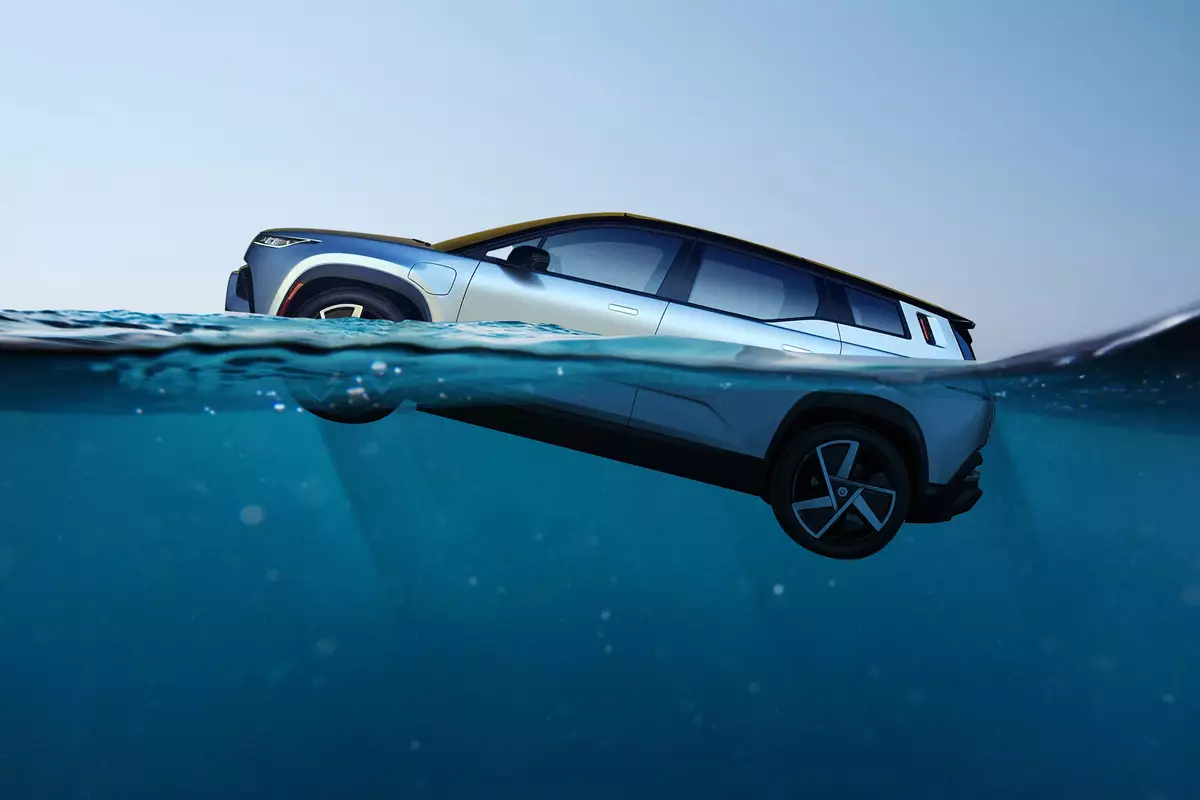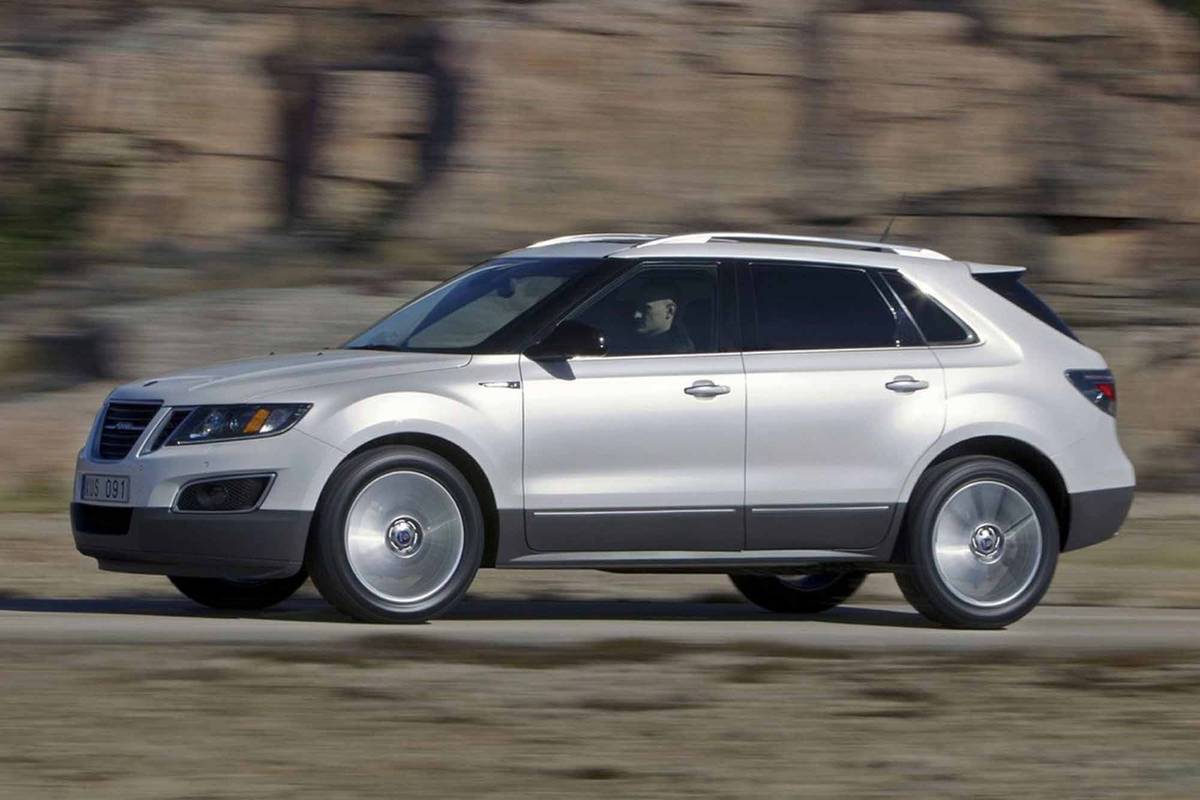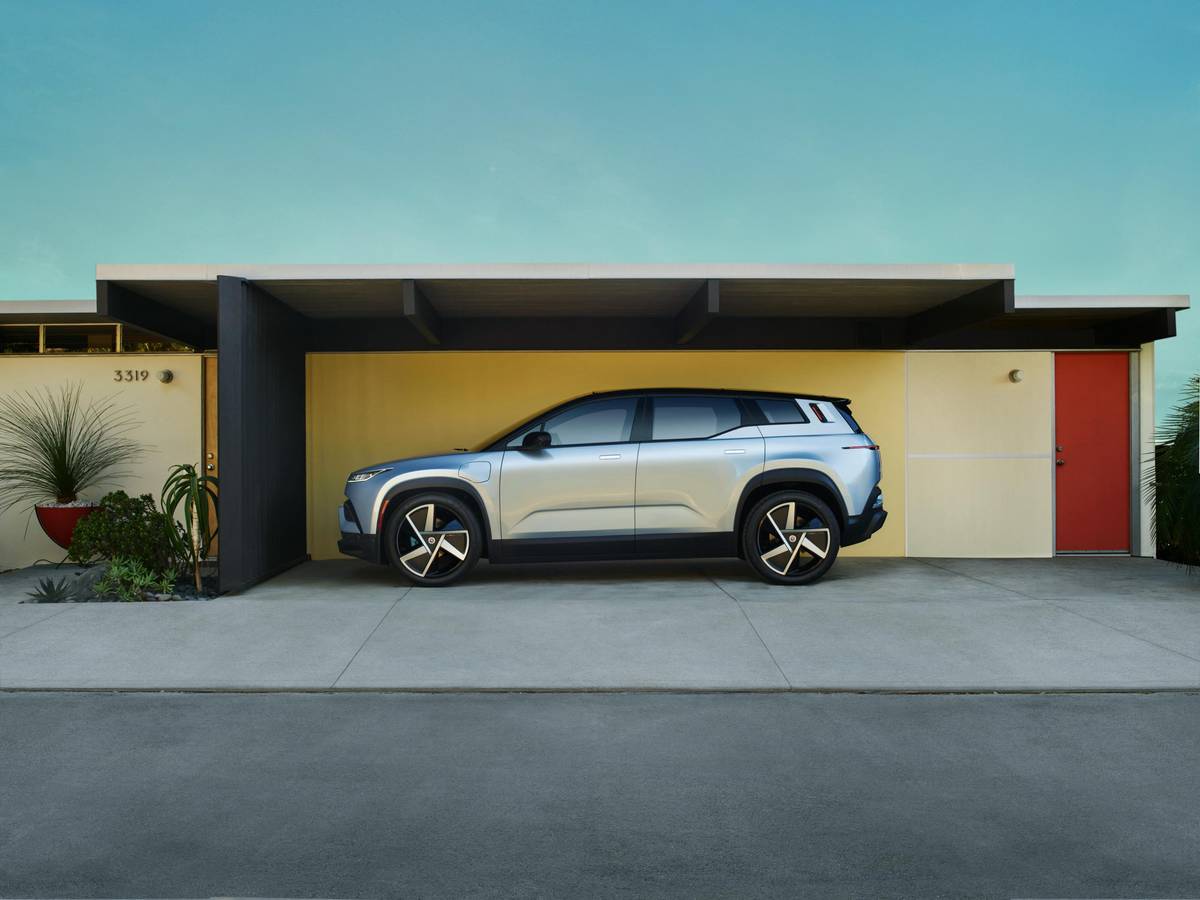What to Do if Your Car’s Manufacturer Shuts Down


Sometimes your love for a car outlives the company that made it. That’s the situation Fisker Ocean owners are facing after the company filed for Chapter 11 bankruptcy protection, but in today’s changing automotive landscape full of promising-yet-sometimes-shaky startups, we don’t expect Fisker to be the last. Having the brand that made your car shut down can feel like a bit of an old-car speed run: Suddenly, you may not be able to find spare parts, updates and service for the newer vehicle you bought from a company that promised to support it.
Related: 2023 Fisker Ocean Cleaves Prices, Now Cheaper Than a Nissan Leaf
Fortunately for owners, Fisker isn’t the first car brand to shut down, and it has one of the most active owners’ groups looking out for their interests as the company goes through the bankruptcy process. Owners I spoke with appreciated the Ocean’s solid-feeling build quality and its ability to tow a camper trailer for longer distances than most other electric SUVs, so it’s not unreasonable for them to want to be able to fix any outstanding issues with their vehicles and continue enjoying them.
Whether you’re looking for advice on what to do with your Ocean, you’re an aspiring Lordstown Endurance owner, or you have a different vehicle whose company isn’t doing so great, here’s our advice based on what’s worked for owners in the past.
Get Organized
Looking at the imminent shutdown of a company you expected to honor your warranty can be overwhelming for one person, so why not split up the work? Chances are there are probably other owners out there who share the same concerns about keeping the cars in working order. That’s where the importance of seeking out other owners comes in: Together, you can figure out what’s happening to factory parts or where to go for service after dealerships close.
Even the small but dedicated group of Local Motors Rally Fighter owners found help in turning to each other after the company pivoted away from its wild Baja-style off-roader and ultimately shut down. Mind you, only about 100 Rally Fighters were made, so there’s hope regardless of how small your car’s community is. Nicholas Bauer, a mechanical engineer at Local Motors who posts videos about the development car and parts he saved from the company, says that many of Local Motors’ employees have stayed active in the community. Keeping in touch with those who helped design and build the car can be a huge help in terms of troubleshooting issues.
“One of the ex-Local Motors employees started a Rally Fighter group on Facebook where owners share information and even talk to many of us ex-Local Motors employees who were assemblers, designers, engineers, fabricators and technicians that created the Rally Fighter vehicles,” Bauer said in an email to Cars.com.

In Fisker’s case, the Fisker Owners’ Association has become a vital mouthpiece for owners. According to FOA’s Europe/U.K. Lead Representative Jose De Bardi, some 2,000 owners across the globe have joined to share updates and resources, as well as to advocate for some kind of future with their cars. There’s a lot on the line, as software issues have left some owners with ongoing problems and sometimes completely undriveable cars, and as Autoevolution notes, many of the car’s basic functions and the Fisker app go through a company server whose future is now in question. Those owners want Fisker — and whatever else is determining the automaker’s fate — to factor in their needs as the company moves through its bankruptcy proceedings.
Focusing on achievable goals once you’re organized is key. According to De Bardi, the FOA is taking a realistic view of what they can and can’t do without Fisker’s involvement. Getting financial compensation from a company with no money is an uphill battle, for example. Likewise, major software changes would likely involve either Fisker or a supplier that could get it tested and approved by various regulatory agencies; as such, a process would likely be out of the association’s budget. Smaller software changes may be possible without all of those extra hoops to jump through. This cold, hard look at the state of the company has helped the group narrow its focus to accumulating a knowledge base, finding spare parts and ensuring there are specialists who can continue servicing Oceans.
It never hurts to get involved with your car’s community before its brand goes on life support, either. Perhaps the best-case scenario for a dying brand was that of Saab, whose owners saw the writing on the wall years in advance, especially after GM bought the brand and tried to de-quirk cars that owners loved for their unique vibe. Owners of later models, such as the final 9-5, have trouble finding certain parts due to their scarcity, but many owners of older Saabs were already used to seeking out independent shops and parts sources.
“I think GM’s heart hadn’t really been in it for a long time,” said repeat Saab owner Peter Hughes in a call with Cars.com. “A lot of those kinds of networks had already been kind of established … so it was less of a thing where you had people scrambling and saying, ‘What do we do now?’”
Worst case, helpful forum posts, how-tos for home wrenchers and other accumulated wisdom will come in handy when the car ages out of being fully supported by its automaker, or when it falls into the hands of more frugal owners looking to work on their cars at home. Consider it good karma (pun intended).
Gather Parts and Knowledge
Making sure spare parts, specialized tools and repair information remain accessible to owners after a company goes kaput is vital to keeping those cars on the road. Some marques have this easier than others. GM’s dead brands could still be serviced by the automaker’s other dealerships, and Saab’s main parts supplier, Orio, is still in business, making parts for newer models.

More limited-production cars or those produced by a brand that wasn’t part of a larger conglomerate or purchased by another company face a significantly tougher future if owners want to keep driving them.
“With modern ‘orphan’ cars, there are so many proprietary electronics issues that the only other way I could see to maintain the vehicle for a long period of time would be to have an extremely talented computer programmer that could maintain or rewrite the computer systems in the car,” wrote Derek Moore, Lane Motor Museum curator of collections, in response to our questions about maintaining the museum’s cars. Moore oversees the museum’s collection full of rare, historic and sometimes one-off vehicles (including a 2012 Fisker Karma from Henrik Fisker’s first attempt at an eponymous car company).
Getting that information often involves finding where the spares and tools went after the company shut down, as well as specialists who still service those cars and may be able to share information with other owners or mechanics.
“I saved as many in-house made parts and complex assemblies as I could,” Bauer said. “Now I sell [new old-stock] parts to owners who need them.” Another ex-Local Motors employee bought the remaining windshield spares and sells them one at a time to owners whose glass gets completely destroyed; the glass was custom-made for the vehicle, and once these run out, the only option is to figure out how to make more — likely at a very high cost.
Ensuring that parties other than Fisker will be able to work on these cars in the future is one of the FOA’s main goals. De Bardi believes that many of the bricked cars should be relatively easy to return to the road with the right resources.
“We realized we’re probably better putting our energy into asking for access to the service tools, being given the blessing to go and talk to manufacturers who are creating parts so that we can maintain parts supply, as well as the blessing to talk to the various software vendors involved so that we can ask them for continued support,” he explained. “Our goal is essentially to maintain some level of support network both in terms of hardware parts supply and software service, and the tools that go with that.”

Some cars that were financially unfeasible to fix have been sold as parts cars, De Bardi noted. The FOA is also trying to identify the Fisker parts made by Magna Steyr, the Ocean’s manufacturer, in order to determine which parts are shared with other Magna-built cars.
One of the biggest uncertainties at the moment is around a possible sale of Fisker’s remaining inventory to American Lease, a company that provides New York City-area ride-hailing drivers with vehicles. According to court documents, Fisker wants to sell the vehicles as is to American Lease with no warranty or maintenance deal and without any software updates beyond version 2.1. However, American Lease would be granted a license to access the proprietary software and relevant source code needed to maintain the fleet and potentially make updates. While it sounds like the wording around software isn’t exclusive — as in, Fisker could potentially share this information with other entities — the FOA wants to ensure that any deal with American Lease will still allow other owners access to spare parts and relevant code.
You May Need to Get Creative
One of the cruel realities of owning a defunct brand’s car is that sometimes the parts or software updates you need no longer exist. Fisker Ocean owners will likely hit this point sooner than most, as the company allegedly tried to save money by ordering fewer spare parts to keep on hand. You may need to make or mend these pieces yourself, have them made or adapt something else that can work in its place.
This is considerably easier with mechanical parts than it is with modern electronics, especially on present-day connected cars. Services like SendCutSend make it relatively easy to reproduce or replace physical components if someone can generate the corresponding computer-aided design file, but features that rely on connectivity or vehicle-specific programming will be tougher to maintain, as mending code and electronics on modern cars is a bit trickier.
“There are many times where we have had to get creative with some of the modern vehicles and adapt systems to be able to maintain functionality, make repairs or clear trouble codes within a vehicle’s system,” Moore explained.

The shutdown of 3G connectivity may offer a grim preview of what will happen with connected cars’ features that can no longer connect using their existing onboard systems: Owners will either have to upgrade to a different system or simply lose access to those features.
This lack of connectivity is the other main issue worrying Ocean owners. The SUV’s software has been glitchy for many owners from the start, with reports of everything from dead key fobs and error codes galore to an inability to access California Mode — a feature that opens every window in the SUV — unless the Ocean is connected to 4G data and has an active license. So, if you want to keep using such features in the likely event that the automaker’s servers shut down, someone will need to reprogram the vehicle’s software.
In the end, you may need to consider how dedicated you are to this specific vehicle and decide whether you can fit the extra time it may take to fix it into your schedule.
Other Costs to Expect
Low parts availability has another unfortunate side effect with insurance, as companies can find it easier to total a car that needs a specific part that’s difficult or expensive to get, or that simply no longer exists. De Bardi, who lives in the U.K., says that some insurers there have already said they will no longer cover the Ocean, and some finance companies have declined to provide loans.
Despite this, Justin Simard, an associate professor at the Michigan State University College of Law, told Wired that Fisker owners should seek a good comprehensive insurance policy in case of a fender bender given the risk that a small collision could total the car. He also warned of a worst possible scenario where Ocean prices could plummet as the SUV’s insurance rates rise.
Several owners of defunct-brand vehicles keep agreed value policies on their vehicles, which covers the vehicle for an amount agreed upon between the owner and insurer and doesn’t factor depreciation into a car’s value. This kind of policy is common for classic and enthusiast cars, and it may be a decent option for Fisker owners who paid full price for a new Ocean at a time when the company is selling its remaining Oceans for as little as $10,000.

If You Just Want to Sell
Some owners who just wanted a newer car with manufacturer support and a warranty may just want to cut their losses, and that’s OK — you don’t have to be the car’s hero. One thing to consider is the potential buyer for a dead brand’s car may change if it’s relatively rare. What may have been intended as a mass-market vehicle can become an interesting collector’s item to more niche-oriented buyers, and you may be able to get more money for it by going through an auction group or an enthusiast dealership.
The downside is that with a fire sale like Fisker’s currently going through, you’re now competing with factory-fresh models going for a fraction of their original cost. For example, before this final inventory blowout (but notably after deep price cuts in March), a 2023 Fisker Ocean One Launch Edition sold on auction site Bring a Trailer for $26,258. If you’re facing a market flooded with the company’s final inventory, it may be worth holding onto your vehicle until the final sales blow over.
More From Cars.com:
- Up Close With the Fisker Ocean: Making Funky Waves
- Fisker Latest Automaker to Offer Tesla Supercharging Network Access
- Do EVs Cost More to Repair?
- Here Are the 11 Cheapest Electric Vehicles You Can Buy
- What Does the EV Tax Credit Overhaul Mean for Car Shoppers?
Advocate for Other Owners
As cars become more dependent on software and over-the-air connections, the issue of what happens when their manufacturers are no longer around to support them becomes even more important. Cars are one of the most expensive purchases we make, and owners shouldn’t be left out to dry just because they were enticed by a startup or thought a brand would stay in business longer.
Consumers deserve more protections for when a company can’t live up to its promises, especially when it comes to things like software updates and warranty service that may not be around after a company folds. De Bardi said he hopes there’s a way in the future to transfer support infrastructure from a defunct company to another organization or owners’ group.
The Fisker situation highlights an even larger issue around ownership that affects cars from every brand, not just ones from brands at risk of going under: When so much is defined by software that can change on a whim, how can you know that you can keep access to features you’ve bought?
“Many other manufacturers maintain a ludicrous amount of control over their vehicles and regularly do withdraw [or] change features that from an owner’s point of view, you bought those upfront,” De Bardi said. “It’s the same set of problems because you suddenly lose a bunch of features that you paid for. Nobody clearly said to you, ‘Hey, in seven years, you are not going to be able to use your sunroof anymore,’ or whatever it is.”
In other words, it’s high time owners ensure access to what they paid for and look out for each other when a brand exits the market. Hoping companies will work with owners’ groups in good faith may not be enough without increased consumer protection or right-to-repair laws that could ensure the continued serviceability of your vehicle for the long run. If this is something you feel passionate about, consider reaching out to your state and national representatives and point out the need for laws to adapt to today’s connected cars.
Related Video:
Cars.com’s Editorial department is your source for automotive news and reviews. In line with Cars.com’s long-standing ethics policy, editors and reviewers don’t accept gifts or free trips from automakers. The Editorial department is independent of Cars.com’s advertising, sales and sponsored content departments.

Former News Editor Stef Schrader joined Cars.com in 2024 but began her career in automotive journalism in 2013. She currently has a Porsche 944 and Volkswagen 411 that are racecars and a Mitsubishi Lancer GTS that isn’t a racecar (but sometimes goes on track anyway). Ask her about Fisher-Price Puffalumps.
Featured stories

15-Year Car Loans Aren’t a Thing, But Americans Are Getting More Comfortable With Long Loan Terms

2025 Kia Telluride Review: Rougher Roads Ahead



